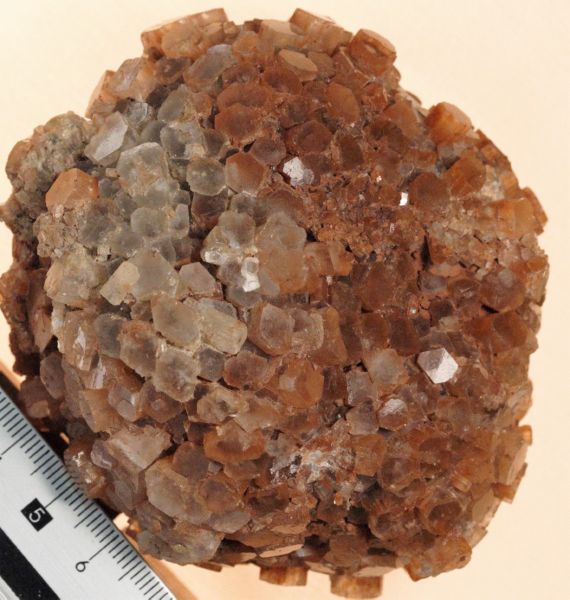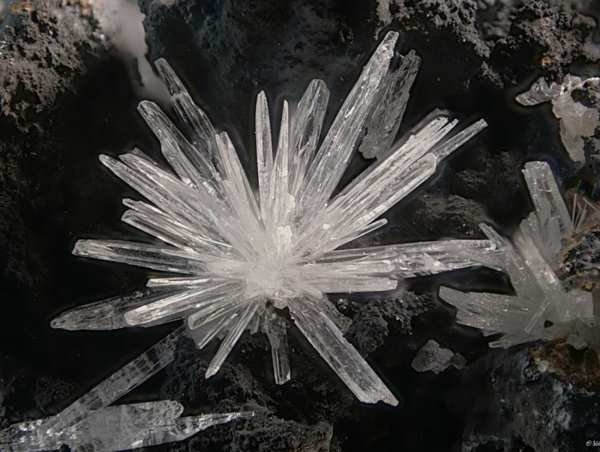Gergovie, La-Roche-Blanche, Veyre-Monton, Puy-de-Dôme, Auvergne-Rhône-Alpes, France
CaCO3
Crystal System: orthorhombic
Colour: usually colorless, white, or also gray. Less frequently, pale shades of yellow, blue, violet, green or red
Lustre: vitreous, resinous
Habitus: prismatic crystals, also acicular, with chisel-like terminations. Thick tabular individuals. Aggregates of columnar crystals and crusts. Globular, reniform, pisolitic, corallodal, stalactitic, usually with fibrous or banded texture
Fracture: sub-conchoidal
Cleavage: distinct/good on {010} distinct; on {110} and {011} very indistinct.
Hardness: 3½ - 4
Density: 2.947 g/cm3
Origin and geological occurrence: it is a polymorph of natural calcium carbonate. It is formed under lower T/higher P conditions than calcite (e.g., in blueschist facies metamorphism). Aragonite often converts to calcite because it is metastable. Aragonite precipitates in warm marine waters, as oolites and carbonate mud and it is a component of shells and skeletons of many marine micro-organisms.
Samples:
 |
5.1 Aragonite #carbonates
|

